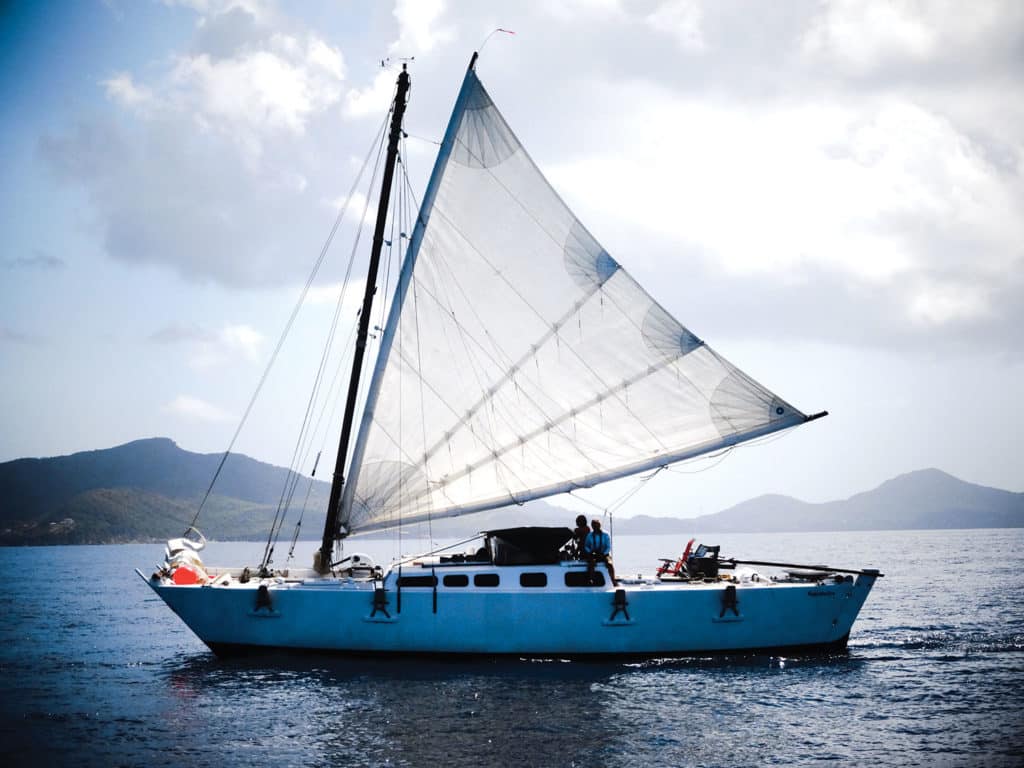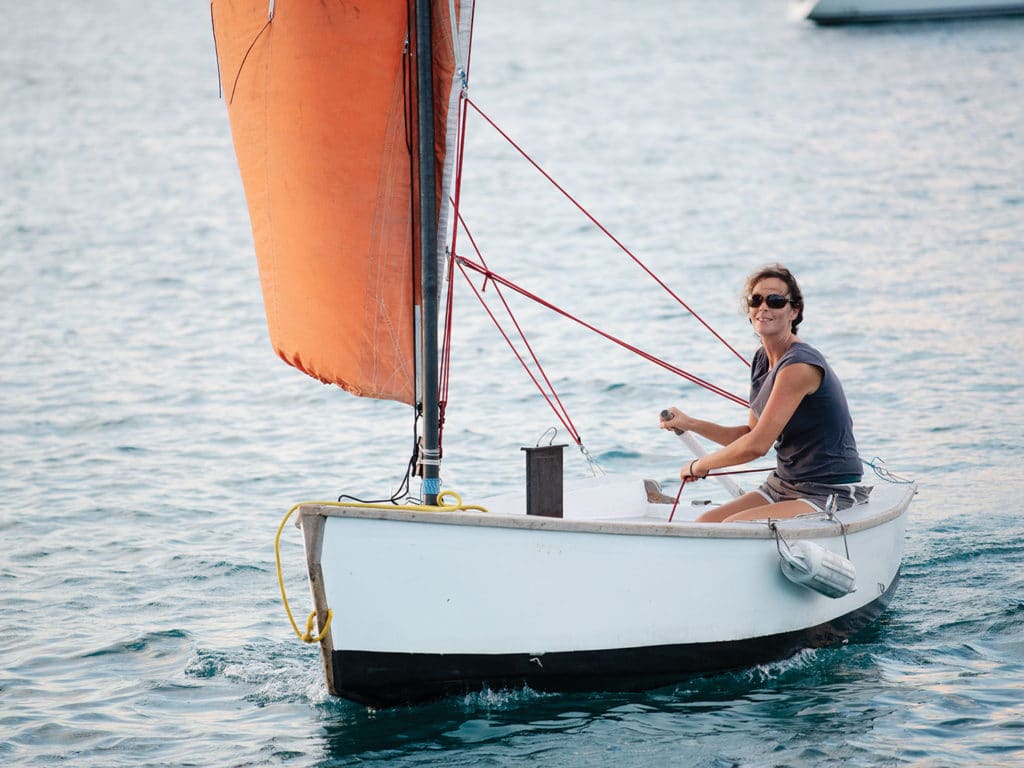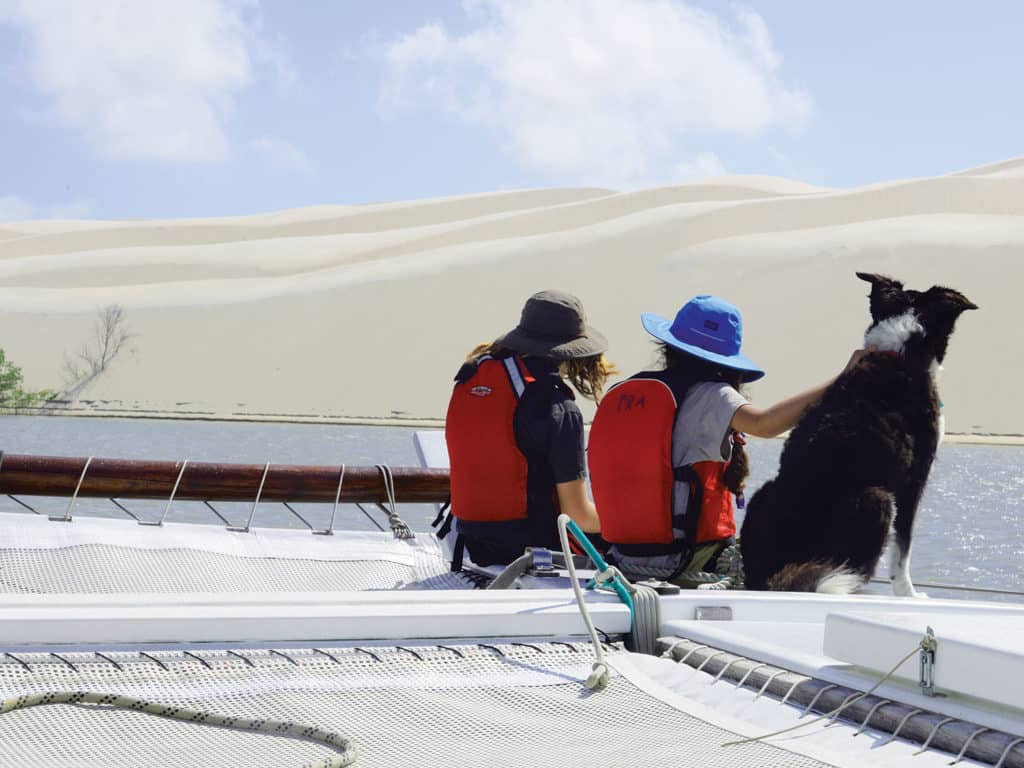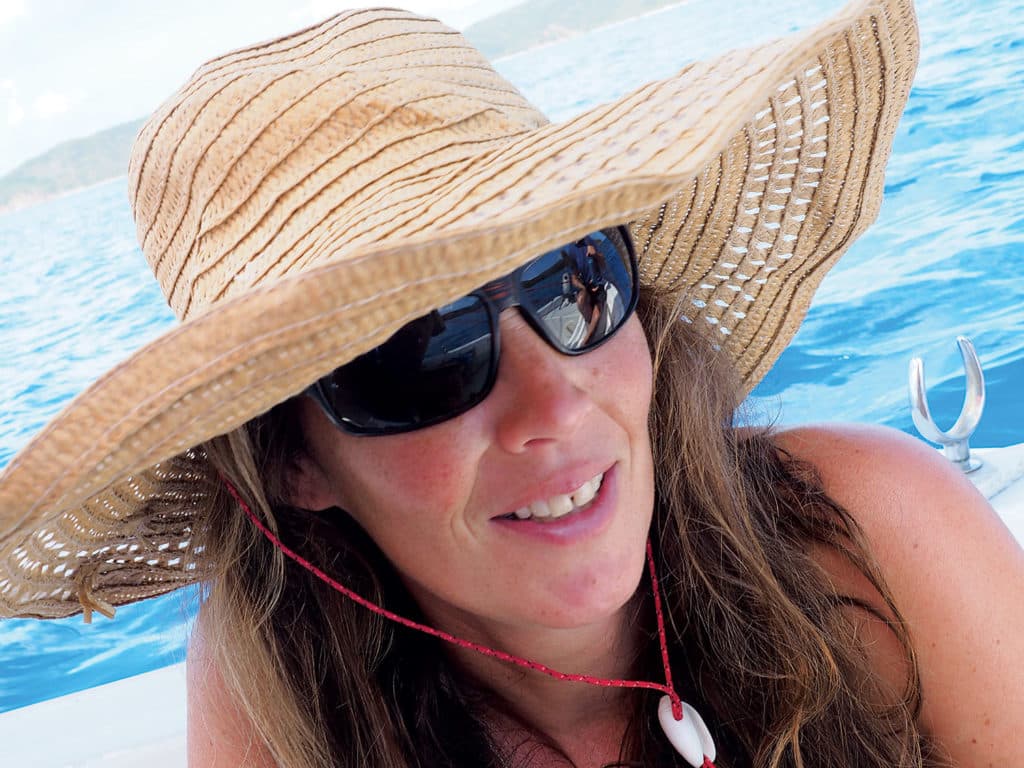
At her wedding many years ago, my friend Kate described marriage in terms of “refuge and prospect.” These words resonated with me then, and over the years they continue to provide contemplation. Now they once again come to mind as I consider our relationship with the beautiful Wakataitea—our home, our adventure, our safety, our means, our classroom, our dream, our table, our project, our vessel and our story.
It didn’t happen right away though. The day we arrived at the small rickety dock at Marina Jacaré in Cabedelo, Brazil, to meet the owners, Hans and Isabelle, and the boat for the first time, I was in shock.
Yes, my husband, Michael, and I had planned this dream for two decades. This was the life I wanted. But thrust into the chaos, heat and intensity of Brazil—our duffel bags still stiff with newness and the children pale and stunned with stuffed animals peeking out of their backpacks—I barely held onto my nerve.
The only way to manage was to simply go through the motions: to feign calm and seaworthiness as I clambered, ducked, stepped and straddled my way through the different cabins, companionways and compartments on board. As we were shown around the boat, I oohed and aahed at all the right times. I asked appropriate questions about how much power the solar panels generated, how the boat sailed to windward, whether there was much weather helm, how reliable the autopilot was, how to light the oven, in what conditions they reefed the main, and if they’d ever found water in the bilge.
Over lunch I made conversation about the kids, our dog and our sailing plans as easily as if we were enjoying a low-stakes brunch with friends at home. However, lying in my bunk that first night, staring through the blue nylon mosquito net hanging so close to my face that it was hard not to focus on its dank and musty smell, the full weight of what we were doing pressed down on me.
Would this bunk be my bedroom for a whole year? Was the comparatively luxurious hotel in Miami the night before we left the last proper shower I would have for the next 12 months? And what about the oppressive heat? The diarrhea, the mosquitos, the seasickness, the night watches? Or the threat of being mugged on land or attacked by pirates at sea? These weren’t far-fetched worries. In fact, Isabelle had been mugged in Cabedelo village on her way to the local grocery that very morning. After the guy snatched her necklace, his motorcycle wouldn’t start so she grabbed him by the shoulders and threw him to the ground. He retaliated by punching her in the face. Over lunch on our first day together, she shared the story and her black eye.
Was backing out still an option? It would be a bit awkward, and inconvenient too. And somewhat expensive as we had paid a $10,000 deposit to be refunded only in the case of “gross differences to the description of the boat.” We had flown the dog and the family 6,500 miles to Brazil. In any case, where would we go? We’d signed a one-year contract with the renters of our house in Seattle. Despite all this, it was still an option to back out, right? These were my thoughts as my pulse raced and I tried to hold back the anxiety that threatened to gallop me into panicked oblivion.
Over the following week, Michael and I did our best to extract all the institutional knowledge wrapped up in the Hans-Isabelle partnership. A German master cabinet-maker and a French canvas-sewer, they were the creative spirits at the heart of Wakataitea. They spent two and a half years building the Wharram-designed 46-footer in New Zealand and sailed her for seven years and 35,000 nautical miles through the South Pacific, across the Indian Ocean, around South Africa and on to Brazil. We wanted to know everything they knew, or at least as much as we could digest in the week we spent together.

I kept my focus on one practical task after another. I engaged my frontal brain to keep my panicked amygdala on the sidelines, and I kept the big-picture consequences of what we were doing beyond my peripheral vision. I went through the motions of learning how to operate the windlass, attach the anchor bridle, reef the crab-claw main and check the engine. I performed tack after tack after tack in the narrow river channel so I could get used to turning the wheel into the wind and still have time to walk across the 20-foot-wide aft deck to work the starboard mainsheet cleat. I learned how to read the battery charge, to check the water level in the tanks and to steer with the tiller as well as the wheel. I learned to manage the weight of the tremendous spars with the lazy jacks and the main halyard. I learned to use the pressure cooker, and of course, to pump the head.
At the end of this time together, we had become friends with Hans and Isabelle. So we not only exchanged paperwork, bank details and email addresses, but also heartfelt hugs. We said goodbye. And just like that, we became the new owners of Wakataitea.
Five months and over 2,000 miles from Brazil to Grenada—and way too many hours of debilitating kill-me-now seasickness bouts—later the words “refuge and prospect” begin to tap about in my head.

I notice that my relationship to the boat has changed. I no longer simply go through the motions to get through the anxiety. I no longer have to talk myself down. When we’re at anchor, I no longer have to get off the boat every day because the beach, the grocery store, the tourist office, the marina restaurant or the library (a highlight of Charlotteville, Tobago) feel more like home than the boat.
I no longer wonder if I can do this or feel relieved to have simply made it through another day. I no longer feel like an impostor who’s desperate to ask other cruisers, “How on earth can you live like this? How do you bear the rolling, the damp, the heat, the bugs? How do you manage the physical effort of lugging groceries on foot and the emotional effort of home-schooling?”
Instead, now when I get up at night, I instinctively know where to put my hands and feet to reach the light and step over the two bulkheads between my bed and the head. I notice a shift in the wind or current, even if I’m asleep. I recognize the sound of our outboard as Michael rounds the point on his way back from the hardware store. I systematically check for weevils, moths and other unsavory characters in the food and containers. I make bread, hummus and yogurt with the ease that only comes from doing things routinely. I launch the dinghy with as little drama as pulling out of the driveway in Seattle. When I sleep on deck, the constellations look as familiar to me as the wallpaper back home. When I sail the dinghy to town and a turtle swims by, I remind myself that it’s a Tuesday.

And I’m not the only one who has settled into this life. My children handle the dinghy with as much ease as riding their bikes around the neighborhood—under sail, with the outboard, rowing or sculling. On Wakataitea, they trim sails and handle the sheets, they help set a second anchor and know when to grab fenders. They load and unload provisions and laundry, fill jerry cans with water and fuel, and rush to close hatches and set up rain catchers in a downpour. They help through the endless list of mechanical breakages that comes with living on a boat. We live together and work together—and we are all thriving.
The boat has taken us to rainforests, jungles, uninhabited islands, primitive outposts and marinas buzzing with yachts from all over the world. But it’s also taken us somewhere farther and deeper. After only a few short months on board, I realize that Wakataitea has become both my refuge and my prospect.
In 2015, Catherine, her husband, Michael, and their two children and the family dog became the owners of Wakataitea. They spent three years sailing from Brazil up the coast of South America, through the Eastern Caribbean, and on to the Bahamas and North Carolina.








